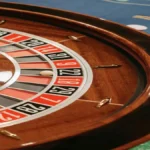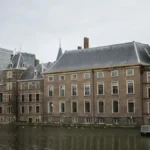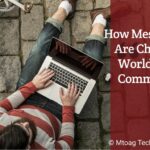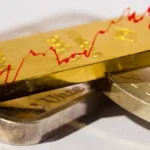MOSCOW — In a move that many observers interpret as both symbolic and strategic, Russian President Vladimir V. Putin attended the Orthodox Easter midnight service at the Christ the Savior Cathedral in Moscow on Sunday, hours after ordering a 48-hour ceasefire in Ukraine. The decision, announced late Saturday evening, coincided with one of the holiest observances on the Orthodox Christian calendar, highlighting the Kremlin’s effort to position Russia’s role in the conflict within a broader spiritual and cultural narrative.
The Easter service, led by Patriarch Kirill, the head of the Russian Orthodox Church and a staunch supporter of the Kremlin, was attended by top government officials, military leaders, and members of the political elite. Putin, dressed in a dark suit, stood solemnly throughout the liturgy, occasionally bowing his head and crossing himself as incense wafted through the vast cathedral. The cameras briefly captured him lighting a candle, a ritual rich in symbolism during the Easter vigil.
The ceasefire announcement, while temporary, has reignited discussions across diplomatic circles about the future of the war in Ukraine, now entering its third year. Though the Kremlin has framed the pause in hostilities as a gesture of goodwill during a sacred time, critics remain skeptical, warning that the timing may be more tactical than spiritual.
A Calculated Gesture or Genuine Pause?
The Kremlin’s statement described the ceasefire as an opportunity for soldiers and civilians alike to observe Easter in peace. “President Putin believes that during such a moment of spiritual significance, all parties should reflect on the need for reconciliation,” the statement read.
However, the Ukrainian government, while acknowledging the temporary halt in fighting, expressed doubt over Moscow’s intentions. “We hope this ceasefire does not become a tool for regrouping and resupply,” said Andriy Yermak, head of Ukraine’s Presidential Office. “We will remain vigilant.”
Military analysts have pointed out that the timing of such truces often aligns with operational needs on the ground. In the eastern Donetsk and Luhansk regions, where fighting has been particularly intense, both sides appeared to observe the ceasefire early Sunday morning, though sporadic shelling was reported in areas near Kharkiv.
Orthodox Christianity as a Political Tool
Putin’s close relationship with the Russian Orthodox Church has deepened over the years, reinforcing a nationalist message that blends spiritual heritage with geopolitical ambition. Easter, celebrated with elaborate ceremonies, processions, and late-night services, has become an opportunity for the Kremlin to showcase cultural continuity and moral authority.
Patriarch Kirill, in his Easter sermon, emphasized themes of resurrection, peace, and unity. “We must remember that true power lies not in arms, but in faith and compassion,” he said. His message echoed through the marble nave, under the watchful eyes of generals and statesmen.
This alignment of church and state serves multiple purposes for the Kremlin. Domestically, it bolsters support among conservative voters and reinforces the notion that Russia stands as a defender of traditional values against what it portrays as Western moral decay. Internationally, it positions Moscow as the guardian of Orthodox Christianity, particularly in contested territories where religious identity is a key part of the socio-political fabric.
Reactions Abroad
Western leaders reacted with cautious optimism to the ceasefire. President Emmanuel Macron of France called the move “a hopeful sign,” while adding that peace requires more than symbolic gestures. In Washington, a State Department spokesperson reiterated the United States’ commitment to supporting Ukraine while encouraging any effort that reduces civilian suffering.
Meanwhile, religious leaders outside Russia, including the Ecumenical Patriarch Bartholomew I of Constantinople, offered prayers for a lasting peace. In his own Easter message, he said, “Let this sacred day inspire leaders to choose dialogue over destruction.”
Ukrainian Perspective
In Kyiv, Easter services proceeded with a mix of reverence and resilience. Many Ukrainians attended mass in underground shelters and metro stations, still wary of potential air raids despite the ceasefire. President Volodymyr Zelenskyy, speaking from the golden-domed St. Michael’s Monastery, stated, “Faith gives us strength, but peace must be built with justice.”
Ukrainian military sources confirmed a decrease in combat activity along several key fronts. Yet, skepticism remained high among commanders and troops who have witnessed previous ceasefires collapse within hours.
“We’ve seen this pattern before,” said a battalion commander near Bakhmut. “They pull back, regroup, and come back stronger. We’re using this time to prepare.”
Looking Forward: A Turning Point or Temporary Lull?
Diplomatic experts suggest the ceasefire might provide a narrow window for renewed negotiations, though no formal talks have been scheduled. The timing—aligned with Easter and ahead of Russia’s May 9 Victory Day celebrations—suggests the Kremlin may be seeking a narrative of restraint and righteousness amid ongoing international scrutiny.
“Every symbolic gesture has political undertones,” said Dr. Elena Kovalchuk, a political scientist at the University of Helsinki. “This ceasefire, whether genuine or not, allows Moscow to recalibrate both its domestic image and foreign messaging.”
For Ukrainians, the ceasefire is unlikely to change the strategic calculus. Most believe that only sustained international pressure and battlefield success will alter Russia’s course. Still, the Easter truce provided a brief, if fragile, reprieve from the daily toll of war.
Religious and Cultural Undercurrents
The intertwining of religious ritual with military strategy is not new in Russian history. Tsars of old often invoked divine favor before major battles. In modern times, the Orthodox Church has become an ideological partner to the state, blessing troops and justifying military actions under the guise of spiritual duty.
The use of religious imagery and language in wartime communications continues to blur the lines between faith and statecraft. Easter’s themes of renewal and hope offer a compelling backdrop for the Kremlin’s message, even as violence persists.
Conclusion
President Putin’s appearance at the Easter service, paired with the temporary ceasefire, underscores the complex blend of symbolism, strategy, and statecraft that defines Russia’s posture in Ukraine. Whether this moment signals a broader shift or merely a tactical pause remains to be seen. But for now, in the candlelit glow of Christ the Savior Cathedral, the message was clear: peace—however fleeting—can still be staged.











